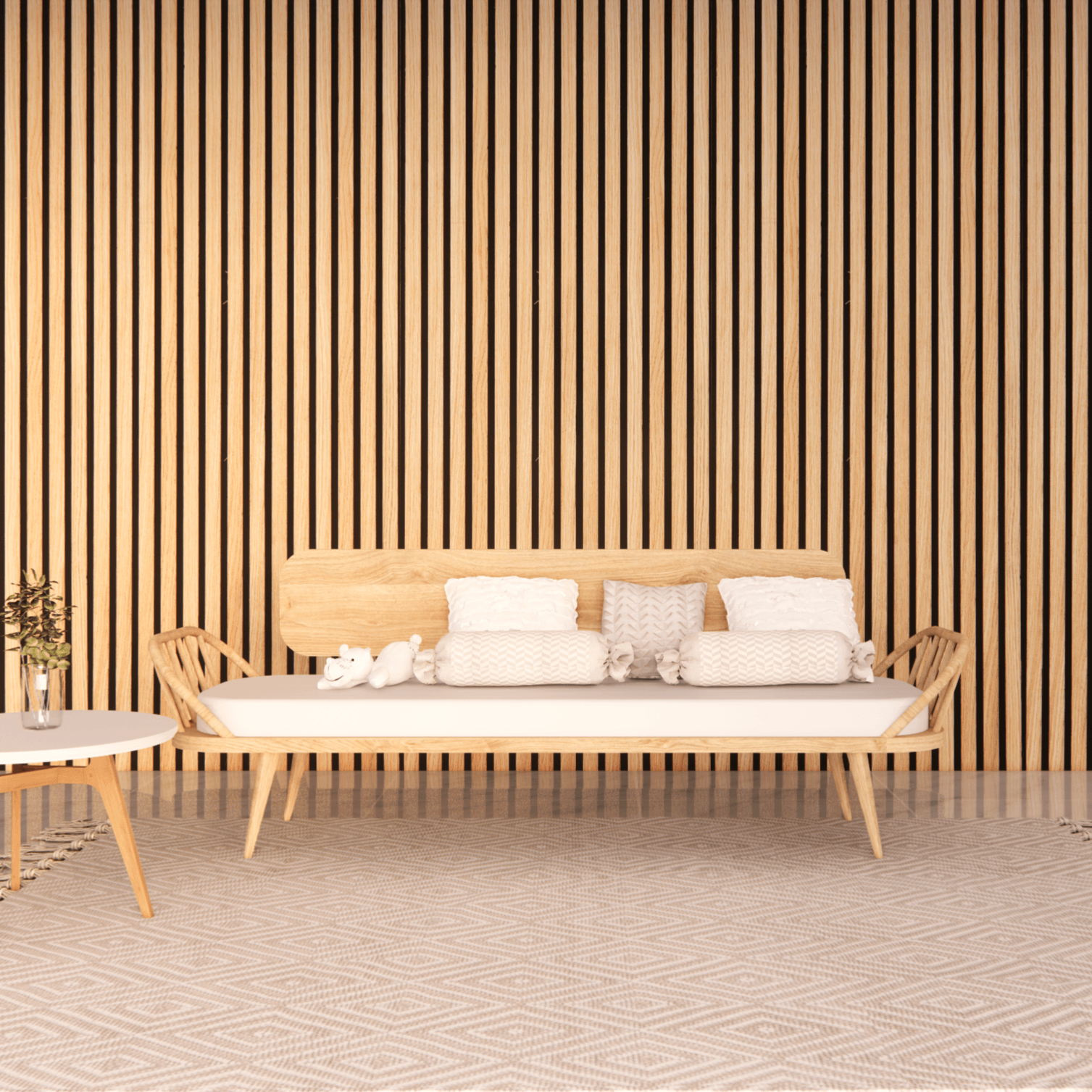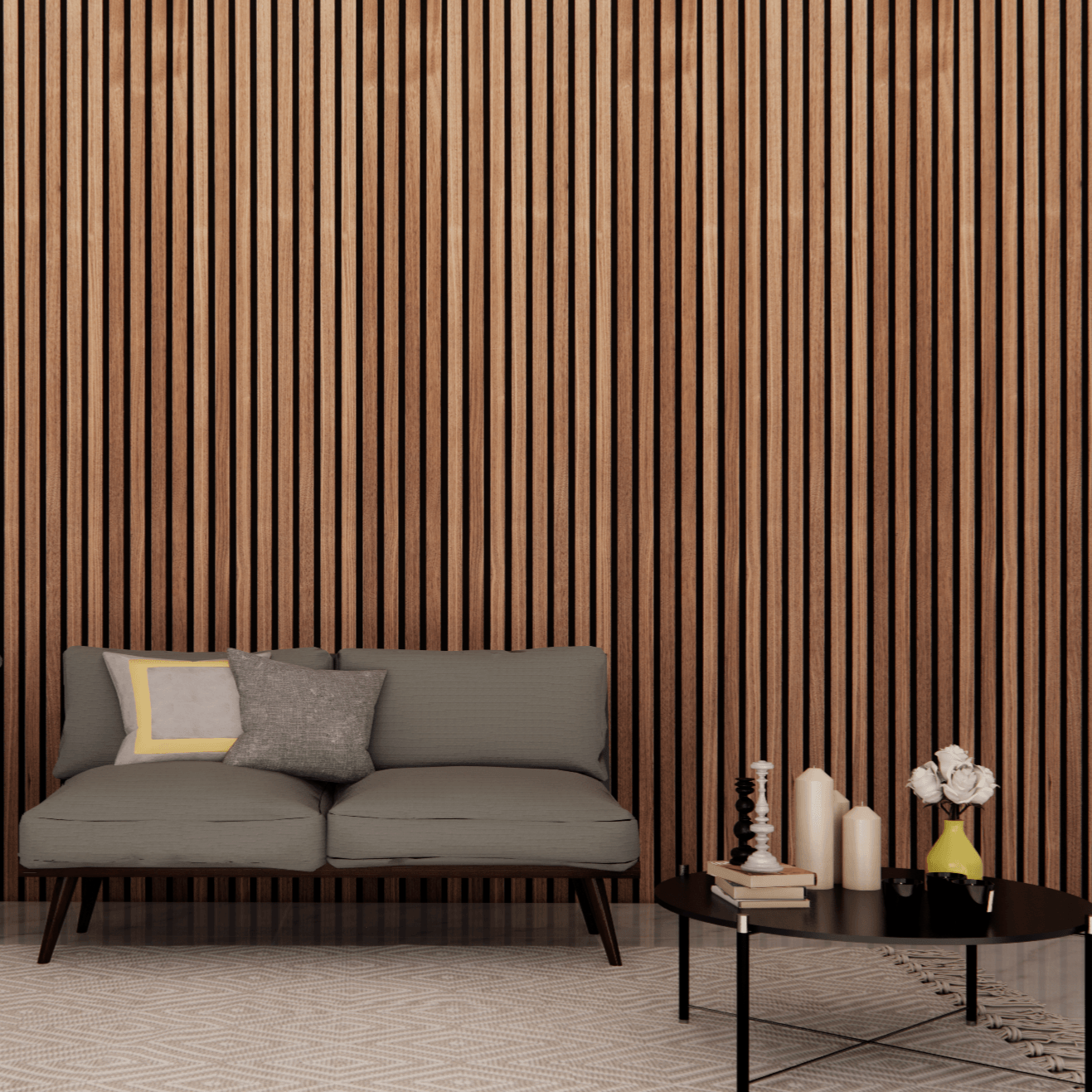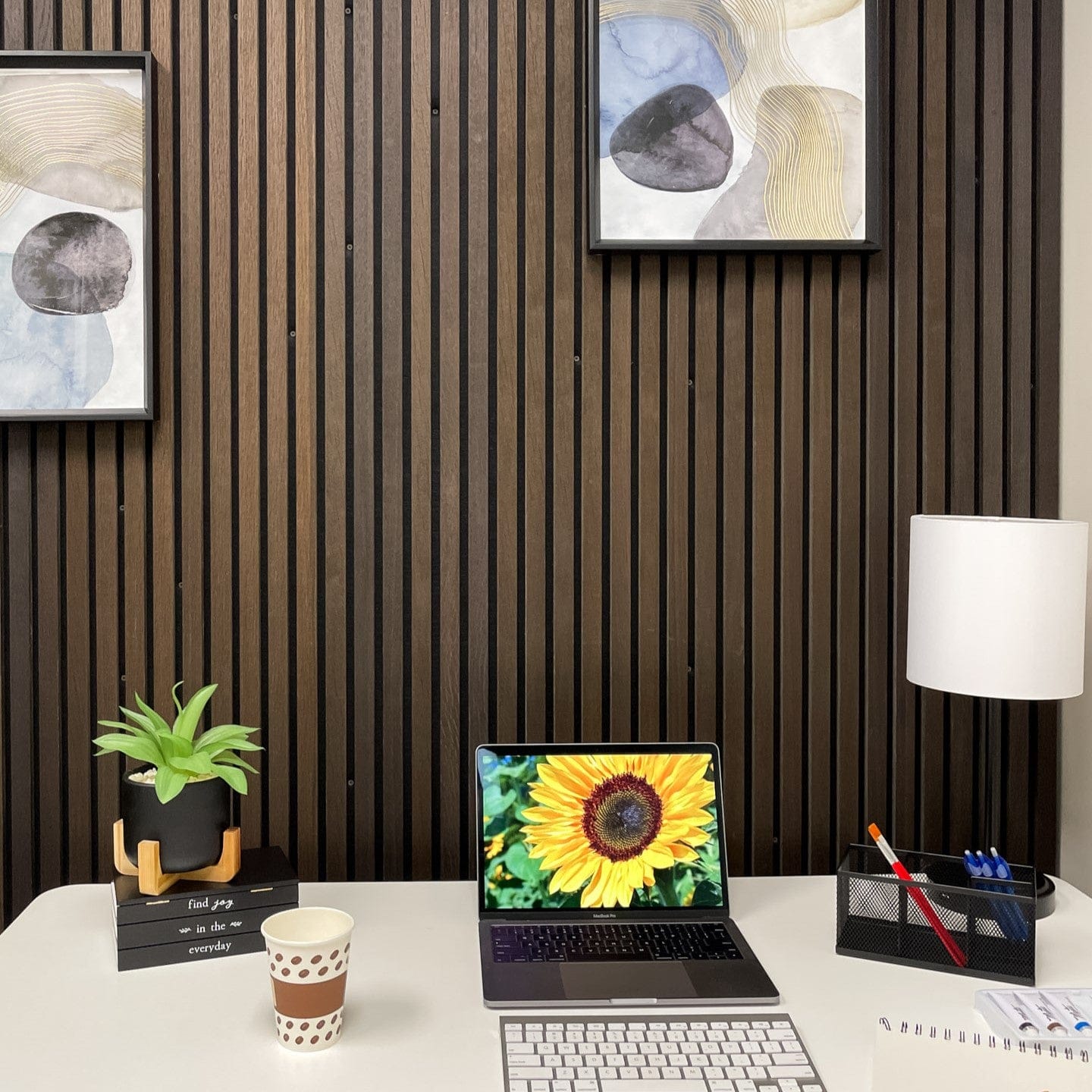Are you looking to add some warmth and texture to your home? Slatted wood wall panels may be the perfect solution. These panels not only bring aesthetic appeal but also offer benefits like improved acoustics and air circulation. In this article, we'll delve into the beauty and versatility of slatted wood wall panels and guide you through choosing and installing them in your home.
The Beauty and Versatility of Slatted Wood Wall Panels
If you're looking for a way to add character and warmth to any room in your home, slatted wood wall panels are an excellent option. These panels are made up of thin, horizontal wood strips that are spaced apart, creating a visually striking feature wall that can add depth and texture to any space.
Aesthetic Appeal of Slatted Wood
One of the key benefits of slatted wood wall panels is their natural, warm look. The beauty of wood is that it never goes out of style, and slatted wood wall panels are no exception. Whether you're going for a rustic, industrial or contemporary aesthetic, slatted wood wall panels can compliment any decor style. This is thanks to the variety of finishes and wood types available. You can opt for lighter woods that have a cleaner, more modern look or darker, distressed textures for a more rustic feel.
Not only do slatted wood wall panels add visual interest, but they also create a sense of warmth and coziness to any space. The natural texture of the wood adds an element of charm that can't be replicated with other materials.
Customization Options for Your Space
This versatility extends to the size and shape of the panels themselves. You can choose how wide or narrow you want your slats to be, and how far apart they should be spaced. Additionally, angled or curved panels can add an extra element of visual interest. This means that you can create a truly unique feature wall that is tailored to your specific taste and style.
Slatted wood wall panels can be installed vertically or horizontally, depending on your preference. Horizontal panels can make a room feel wider, while vertical panels can make a room feel taller. You can also mix and match different sizes and finishes to create a truly one-of-a-kind look.
The Timeless Nature of Wood
Wood is an evergreen material that never goes out of style. It's also easy to maintain, durable, and versatile, making it an excellent choice for projects like these. When properly sealed and finished, slatted wood wall panels can last for years without showing any signs of wear and tear.
Another benefit of slatted wood wall panels is that they can be used in a variety of spaces, from living rooms and bedrooms to kitchens and bathrooms. They can also be used to create a focal point in a space, or to add texture and interest to an otherwise plain wall.
Overall, slatted wood wall panels are a beautiful and versatile option for anyone looking to add warmth, texture, and interest to their home. With so many customization options available, you can create a truly unique feature wall that is tailored to your specific taste and style.
Benefits of Installing Slatted Wood Wall Panels
If you're looking to add a touch of warmth and texture to your home's interior, slatted wood wall panels are an excellent choice. Not only do they add visual interest to a room, but they also offer a range of practical benefits that make them a smart investment.
Improved Acoustics and Soundproofing
One of the unexpected benefits of slatted wood wall panels is their sound-absorbing properties. The gaps between the slats create pockets of air that break up sound waves, reducing overall noise levels in the room. This quality makes slatted wood wall panels a great addition to rooms where sound quality is important, such as home theaters or music rooms.
But it's not just about the acoustics. Slatted wood wall panels can also help with soundproofing. By adding an extra layer of insulation to your walls, they can help to keep noise from traveling between rooms. This can be especially helpful in homes with open floor plans or in apartments where sound travels easily between units.
Enhanced Air Circulation
The gaps between slats also allow for better air circulation around the room. This can be especially helpful in spaces that are prone to humidity or dampness, such as bathrooms. The extra air flow can help prevent mold and mildew from forming and keep the air fresh.
In addition, slatted wood wall panels can help regulate the temperature in a room. By allowing air to circulate freely, they can help keep a room cooler in the summer and warmer in the winter, which can save you money on your energy bills.
Easy Maintenance and Durability
Wood is a low-maintenance material that can be cleaned easily with a damp cloth or furniture polish. Additionally, if a slat becomes damaged, it can be easily replaced without having to take down the entire panel.
But beyond their ease of maintenance, slatted wood wall panels are also incredibly durable. They can withstand wear and tear from everyday use and are resistant to scratches and dents. This makes them a great choice for high-traffic areas of your home, such as hallways or entryways.
Overall, slatted wood wall panels are a versatile and practical addition to any home. With their unique combination of style and functionality, they offer a range of benefits that make them a smart investment for any homeowner.
Choosing the Right Slatted Wood Wall Panels for Your Home
Slatted wood wall panels are a stylish and versatile way to add texture and depth to any room in your home. Whether you're looking to create a cozy, rustic feel or a modern, industrial vibe, there are a variety of options to choose from. In this article, we'll explore some of the key factors to consider when selecting slatted wood wall panels for your home.
Types of Wood and Finishes
One of the first things to consider when choosing slatted wood wall panels is the type of wood you want to use. Oak, teak, and cedar are all popular choices due to their durability and natural beauty. Oak is a classic choice that can add warmth and richness to a room, while teak is known for its strength and resistance to moisture. Cedar, on the other hand, is a lightweight and fragrant wood that is often used for outdoor applications.
Once you've chosen the type of wood, you'll need to decide on a finish. Natural finishes can highlight the wood's natural grain and color, while stained finishes can add depth and richness. Painted finishes can provide a pop of color or create a sleek, modern look, while distressed finishes can give the panels a rustic, weathered appearance.
Panel Sizes and Spacing
The size of the panels themselves is another important consideration. Smaller panels can be a good choice for smaller rooms or accent walls, while larger panels can create a dramatic effect in larger spaces. The spacing between each slat can also be adjusted to suit your preferences and the proportions of the room. Narrower spacing can create a more traditional look, while wider spacing can give the panels a more contemporary feel.
Vertical vs. Horizontal Installation
Another factor to consider is whether to install the panels vertically or horizontally. Vertical installation can create a sense of height in a room and draw the eye upward, while horizontal installation can make a room feel wider and more open. The choice ultimately depends on your personal preference and the dimensions of the room. If you have high ceilings, for example, vertical installation may be a good choice to emphasize the height of the space.
Overall, slatted wood wall panels are a versatile and stylish way to add texture and visual interest to any room in your home. By considering factors such as wood type, finish, panel size and spacing, and installation orientation, you can create a customized look that perfectly suits your style and space.
DIY vs. Professional InstallationTools and Materials Needed for DIY Installation
If you're considering a DIY installation, you'll need to gather the following tools:
- Circular saw or hand saw
- Level
- Drill and screws
- Spackle or wood filler
- Sanding block or sander
- Primer and paint/stain
Step-by-Step Guide to Installing Slatted Wood Wall Panels
Here's a basic outline of the steps involved in installing slatted wood wall panels:
- Measure and plan out your panel placement.
- Cut your panels to size using a saw.
- Install the mounting brackets to the wall.
- Attach the panels to the brackets using screws.
- Fill in and sand any gaps or holes.
- Prime and paint/stain as desired.
When to Hire a Professional
If you're not comfortable tackling a project like this on your own, or you have a larger or more complex installation in mind, it may be best to hire a professional. They can handle all aspects of the installation, from measuring and cutting the panels to ensuring they're level and secure.
Final Thoughts
Slatted wood wall panels are a beautiful and versatile way to transform any room in your home. Their natural, timeless look coupled with practical benefits like improved acoustics and air circulation make them an ideal choice for anyone looking to add warmth and texture to their space. From choosing the right type of wood and finish to deciding on the best installation method, we hope this article has provided you with the information you need to make an informed decision about slatted wood wall panels for your home.







